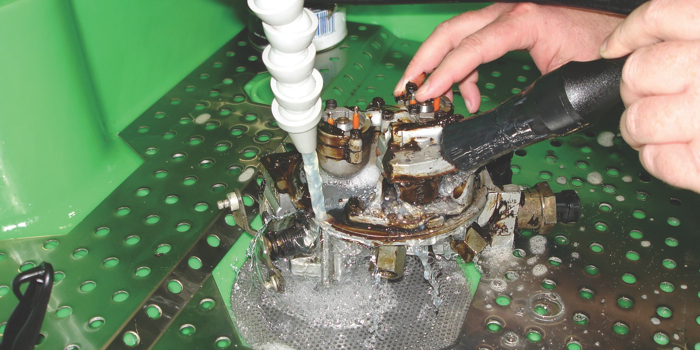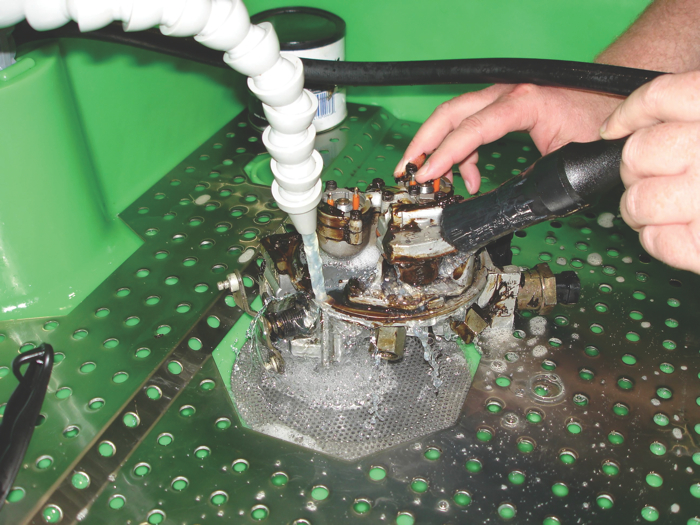
As engine technology continues to evolve, so have the cleaning processes for removing dirt, grease, oil, hard carbon deposits, rust, scale, corrosion and discoloration from engine castings and components.
Several factors make cleaning more challenging today. For one, most late model engines are either bimetal or all-aluminum. Many also have plastic intake manifolds, oil pans and valve covers. Castings are more intricate, and many have blind holes and various types of rubber or silicon plugs and seals. Add to this all of the environmental rules and regulations and you can see that cleaning isn’t the simple one-size-fits-all process it used to be.
Aluminum and iron castings can be cleaned a variety of ways and often using the same type of equipment, although some shops prefer to set up separate cleaning processes for each type of metal. A spray cabinet doesn’t care if the parts inside it are aluminum, cast iron or even plastic. Hot water and detergent will remove dirt, grease, oil and other surface contaminants effectively, quickly and economically with minimal labor input. Just load your parts in the cabinet and it does all the work. Automated spray washers and flow-through systems let you push a button and walk away. That frees up time for other tasks (such as billable labor for machine work or assembly work) and helps boost overall shop productivity and profitability.
For more stubborn contaminants like hard carbon deposits in exhaust ports, thermal cleaning works well as does abrasive bead blasting or soda blasting. Baking off grease and grime in an oven leaves ash residue on the surface so some type of post-cleanup procedure is required such as spray washing, shot blasting or some type of media blasting. Any cleaning process that requires a lot of manual effort and handling will add to your cleaning costs, so it’s important to use techniques that require the least amount of physical effort.

With aluminum castings and other parts, the cosmetic appearance of the parts after they have been cleaned has also become more important than ever before. Aluminum often becomes discolored and stained with use, and nobody wants an “ugly” part going on the engine. So if an aluminum casting doesn’t look bright and shiny after its initial cleaning, it may require a subsequent cleaning step to restore a like-new appearance. Soda blasting is a soft media that works well for restoring aluminum. Other options include spray painting with aluminum paint or applying a powder coat (aluminum, clear or any color your customer wants).
One alternative to dry blasting with baking soda is a wet blast cabinet. With a wet blast cleaning process, the soda is mixed with water to form a slurry, which is then sprayed at the part though a high pressure nozzle. Wet blast is nice because it creates no dust or static electricity. The slurry can be recycled several times, then rinsed off, leaving the surface clean and bright.
Soaking
Soaking parts in a hot tank, cold tank or ultrasonic tank can also remove most of the contaminants with minimal effort. Soaking is usually a more time-consuming process depending on the cleaning solution that is used and whether or not the tank provides some type of agitation, circulation or heating. A cleaning solution that is in motion (or parts that are in motion within the cleaning solution) will do a faster, better job of removing gunk than motionless parts submerged in a static tank.
It’s important to use the “right” cleaning chemical or detergent for the application, whether you are cleaning aluminum, cast iron or both in the same equipment. The best advice we can offer is to follow the recommendations of your equipment and chemical suppliers. They know their products and what works best for each type of cleaning application.
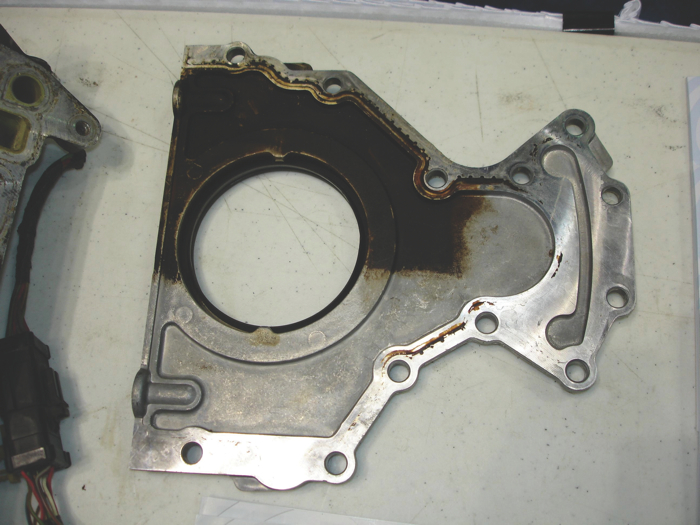
Caustics are great for cleaning cast iron, but may be too harsh for aluminum. Solvents work quickly and are very good at dissolving grease and oils, but the use of these may be banned or limited by local environmental rules that restrict VOC (volatile organic compound) emissions. Solvents can also be toxic, and there are concerns about the long-term health effects from daily exposure. Most solvents are also flammable, although the flash point is usually high enough it is not a serious safety concern.
Aqueous cleaning solutions usually comply with VOC emission rules and are nontoxic and nonflammable. But water-based cleaning solutions may not clean as quickly or effectively as caustics or solvents. However, aqueous solutions have improved considerably over the years and are now an effective cleaning alternative for most types of applications. Aqueous solutions are often metal specific (aluminum or cast iron) but others are “universal” products that can be used for both types of metal.
Depending on where your business is located, the percentage of shops that are now using some type of aqueous cleaning process may be as high as 70 percent or more. Nationwide, the average is more than 50 percent.
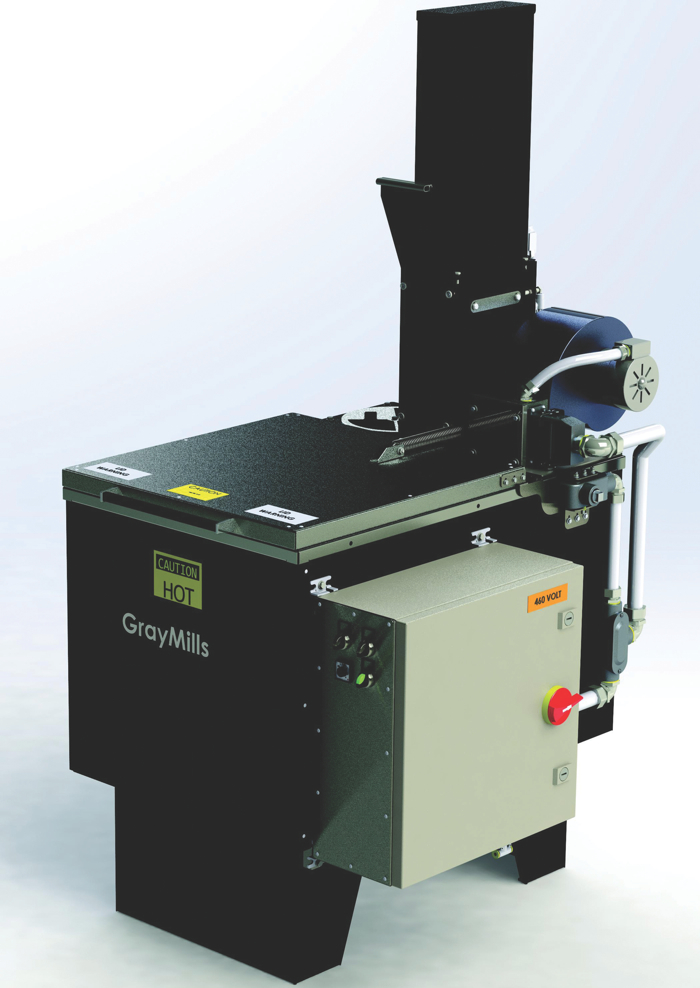
The trick with any cleaning solution is following the directions and recommendations of the product supplier. You need to use the correct dosage (not too much, not too little), and you need to maintain the strength and cleanliness of the solution. Oil skimmers and filters can help prolong the life of an aqueous cleaning solution in a hot or cold tank, and all tanks require a certain amount of regular maintenance to remove the accumulated crud from the bottom of the tank. A corrosion inhibitor should also be used in the solution to prevent flash rust on iron parts.
Another tip for prolonging the life of the cleaning solution in a tank is to pre-clean really dirty parts with a jet washer and/or some manual scraping. If a block has a half-inch thick accumulation of grease and dirt on it, blasting or scraping off the worst of the gunk before it goes into the tank will reduce the time it takes to soak off the rest of the contaminants. It will also keep the worst of the gunk out of the tank.
Heat also speeds up the cleaning process in a tank or a spray cabinet by allowing the cleaning solution or detergent to work more effectively. But heat also adds energy cost to the process. The trick is to find the ideal temperature that delivers the best cleaning results with the least amount of kilowatts. For many aqueous cleaning solutions, the ideal temperature range is somewhere between 140 to 160 degrees F.
More heat may not improve the cleaning process or reduce the time it takes to clean the parts, but it will certainly drive up your utility bills. Using a programmable timer to lower tank temperature overnight and pre-warm the tank before your business day starts can help reduce your energy costs.
Excessive heat will also increase the evaporation rate from a hot tank. Keeping the tank covered and having adequate insulation around the sides of the tank will help reduce heat loss and energy costs. Some of the newer hot tanks feature a design that minimizes “freeboard.” This is the open surface area of the tank in relation to the overall volume of the tank. A deeper tank with a smaller open area will have less freeboard than a shallower tank with a larger open area.
Cold tanks don’t use any heat and are designed to work at room temperature. Consequently, there are no energy costs associated with using cold tanks. However, cold tanks typically take longer to clean parts, which may or may not be a factor to consider depending on how skilled you are at scheduling workflow through your shop. Parts may have to soak overnight to get off the worst of the gunk. Agitating the cleaning solution with a pump and nozzles, or using a platform or basket that moves the parts within the tank helps speed up the cleaning process.
Ultrasonics
For “high tech” cleaning, ultrasonics have become a popular upgrade for hot and cold tanks that use aqueous cleaning solutions. Ultrasonics adds a whole new dimension to cleaning by blasting both the exposed and hidden surfaces of parts with high-energy sound waves. It can clean inside blind bolt holes and won’t harm rubber or plastic seals or plugs. Ultrasonic transducers located inside the tank generate high frequency sound waves that create microscopic bubbles in the cleaning solution. When the bubbles impinge on the surface of a part, they explode and knock loose any contaminants on the surface. It’s a cavitation cleaning process that knocks the gunk loose. It does not involve a chemical reaction, although a detergent or cleaning solution is still needed to carry away the particles.
With ultrasonics, grease, oil and grime appear to diffuse away from the surface as soon as the parts are immersed in the tank. Ultrasonics even loosen and remove most of the hard carbon deposits from exhaust ports, too. Parts usually come out of the tank in 15 to 30 minutes looking like new. Any residual hard carbon deposits that were not completely removed in the tank may require some hand brushing or a quick sweep with a soda blaster.
One ultrasonics manufacturer we spoke with said that a frequency of 40 KHz usually works best for cleaning engine parts. Lower frequencies can provide a more aggressive cleaning action by creating bigger bubbles, but it may be too harsh for softer metals such as aluminum or plastic. Much higher frequencies produce even smaller bubbles, which result in a milder cleaning action. Higher frequencies are typically used to clean electronic components like circuit boards and cell phones, and even medical implants like artificial knees and hips.
The only drawback with ultrasonic cleaning is that it uses more energy than a heated tank. The heater in a 20 to 25 gallon tank typically uses about 1,000 watts. With ultrasonics, you can figure an additional 1,200 to 2,400 watts – but only during the actual cleaning process. The ultrasonics can be turned off when it isn’t needed.
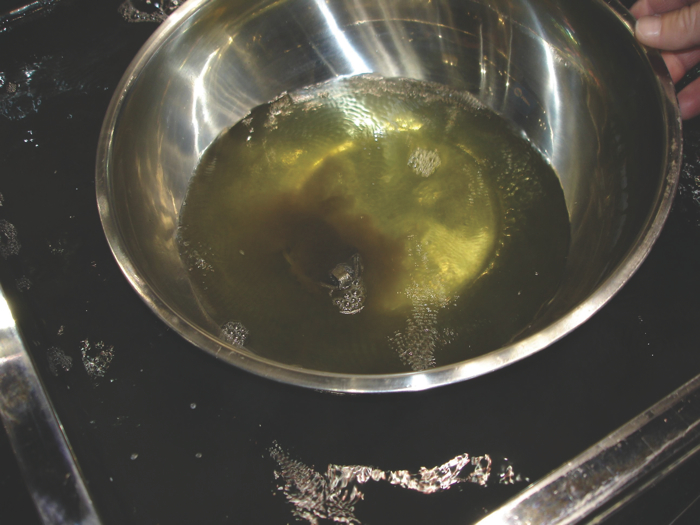
Blasting
Blasting is yet another technique that can be used to clean the surfaces of engine parts. Glass bead blasting and metal shot blasting work best with dry surfaces. Soft media such as plastic beads and walnut shells can be used to clean aluminum and plastic parts without etching surfaces. Soda blasting is a popular alternative to other types of blast media because it is soft, won’t damage parts, is water-soluble so it can be used wet or dry, and rinses right off parts. It also eliminates the risk of residual glass or metal media being left inside a part and causing a problem when the engine is assembled and run.
Waste Disposal
Regardless of what type of cleaning process you use, eventually you end up with residue that has to be disposed of. Some sources estimate that cleaning automotive parts generates upwards of 200 million tons of hazardous waste annually.
Non-hazardous waste can go out with the trash provided it contains little or no heavy metals (lead, mercury or cadmium), oil, grease, toxic compounds or solvents. Most solvent companies pick up and recycle products to eliminate disposal concerns for the end user. Some solvent tanks also use a built-in distillation process that heats the solvent to vaporize and separate the solvent from oils and other contaminants. This extends the life of the solvent while concentrating the waste products.
With thermal and aqueous cleaning processes, you will have leftover wastes that will have to be stored and disposed of. There are numerous federal, state and local rules governing hazardous waste disposal, more rules about what exactly constitutes a hazardous waste, and additional rules about what can be legally poured down a drain. To make matters even more confusing, rules can differ quite a bit from one state to another and even from one city to another within the same state!
With thermal cleaning, most of the gunk is burned up and vaporized, and goes up the stack as combustion byproducts. Many areas have rules about stack emissions and how much hydrocarbon, carbon monoxide, oxides of nitrogen, sulfur dioxide or particulate matter are allowed to meet clean air standards. An efficient afterburner in the stack will reduce most emissions to acceptable levels, but you will still have a certain amount of solid ash to dispose of after parts have been cleaned.
With spray cabinets and tanks, you also have even more left over gunk to get rid of, plus the old cleaning solution when it reaches the point where it no longer can clean effectively. Water-based solutions can be evaporated to reduce the volume substantially.
Contaminants in the water also can be removed chemically (flocculants that cause suspended particles in the solution to aggregate and stick together), by filtration or bioremediation (bacteria that eats oil and grease, or special enzymes that break down oils). Once the leftovers have been concentrated, they can be stored in a drum and disposed of like any other hazardous waste depending on local regulations.
If you are blast cleaning with some type of media, the used media can often be disposed of as ordinary waste. But again, you should check with local authorities to make sure it complies with the rules. Your equipment supplier should also be able to answer any questions you have about waste disposal matters.

